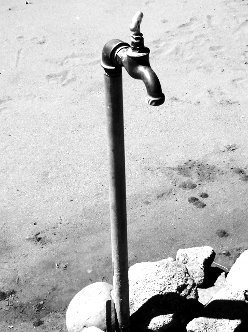Water body reports on Gap
 Australia’s major water lobby has issued a report on how to improve water services for First Nations communities.
Australia’s major water lobby has issued a report on how to improve water services for First Nations communities.
The Water Services Association of Australia has released a new report alongside Linda Burney, Minister for Indigenous Australians, at Parliament House.
“We estimate that it will require investment of a minimum of $2.2 billion to bring drinking water in line with the Australian Drinking Water Guidelines, more when you include replacing old pipes and plumbing” says Adam Lovell, Executive Director of the Water Services Association of Australia.
Over 500 First Nations communities do not have regular water quality testing.
First Nations communities, particularly in remote areas, are receiving drinking water with levels of uranium, arsenic, fluoride and nitrate that are above levels against the Australian Drinking Water Guidelines.
The report finds that:
-
All states and territories should formalise the Australian Drinking Water Guidelines to ensure at least a minimum quality standard is met whether a person lives in Sydney, Shepparton or Yuendumu
-
Ongoing significant investment is needed in both water quality monitoring and an innovation fund to develop new technologies that are resilient to climate change impacts, and ideally integrated with renewable energy and digital communications
-
First Nations communities need a stronger voice in the services they receive. Stakeholder mapping shows complex interactions across a myriad of agencies and unclear accountability
The report contains case studies which show that dirty or smelly water, or taps clogged with calcium deposits cause significant knock on effects for communities beyond drinking water which adds to the urgency of the recommendations.
It points to a number of positive examples already underway, including the WA Government’s investment in water infrastructure for communities in the Kimberley, plumbing courses to help communities to maintain their health hardware in SA, a new water treatment facility in NT, and work in Queensland by the Health Department to improve the skills of operators of water treatment plants.
The full report is accessible here.








 Print
Print